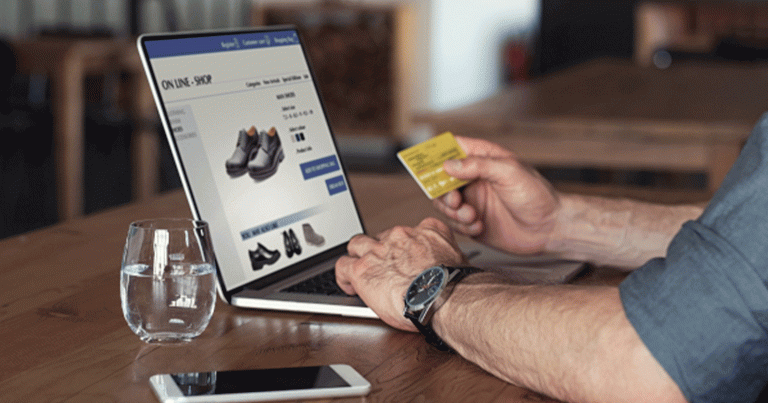
02/20/2017 | Digital Experience and Mobile | Thought Leadership
In retail, if you don’t adapt, you die. In the retail graveyard lie numerous once-thriving companies that failed to meet their customers’ expectations for the brand or its products or services.
In today’s mobile world, where there are more connected devices than people, retailers must transform into technology-focused businesses in order to survive. The 4Ps—price, product, promotion, and place—are expressed through many channels: brick and mortar stores, e-commerce, social media, mobile apps, and emerging technologies. Retailers need to optimize this portfolio of customer touch-points in ways that embrace the reality that a single customer is experiencing the brand across all these channels, sometimes simultaneously.
Today’s customers are far different than customers from even a few years ago—they have high expectations for a swift and pleasing purchase experience, which can occur anywhere, at any time, and in a multitude of ways. They expect retailers to know their past interactions, and if they are a loyal customer, they want personalized attention. This approach that provides customers with a seamless and integrated shopping experience is known as a retailer’s omnichannel strategy.
Some Early Success Stories
Although inspiring examples abound, there is no single playbook that will work for all brands, and most retailers are still experimenting with what Omnichannel means for them, and how to prioritize potential efforts for maximum ROI.
Becoming an omnichannel retailer requires a seamless integration of digital and traditional channels working in tandem to provide positive experiences for customers that turn into lasting relationships. The key here is relationship, where the interaction between business and consumer can happen at any time, day or night, online or in a store, each experience deepening the customer’s engagement with the brand. This is the online/offline experience puzzle that retailers are having difficulty piecing together.
It’s not impossible, but it is daunting. Through some innovative thinking and experimentation, some retailers have made exemplary inroads into multichannel experiences, building up to a holistic experience piece by piece. Here are just a few examples:
Walgreens: The drug-store stalwart with a 116-year history is certainly not acting its age. Customers can refill prescriptions at their convenience by phone, email, or scanning the barcode with a mobile device. Its photo-printing service can be initiated in-store, on the Walgreens website, or through the Walgreens mobile app. Geofencing capabilities identify customers as they walk into a store and can notify them of their loyalty account point balance, available coupons, and even to refill or pick up a prescription. Virtual doctor appointments can be scheduled via the Walgreens mobile app. All of this interaction adds up: Walgreens reports that customers who shop in-store, online and through the mobile app spend six times the amount spent by customers purchasing only in-store.
Amazon.com: Amazon has all but perfected the logistics end of the omnichannel experience from an online perspective but is now a true omnichannel retailer with the opening of its first brick and mortar retail stores. Its first effort was a bookstore in the University Village mall in Seattle in November 2015; it now operates bookstores in five states. More bookstores are planned, along with more than 100 retail “pop up” stores in shopping malls and more than 2,000 brick-and-mortar convenience/grocery stores over the next 10 years in the U.S. As their impressive demos show, they intend to bring the frictionless nature of online shopping into the physical world. With these investments, Amazon is leading innovation and protecting against potential vulnerability if it remains only in the online space.
Macy’s: After some early misses, in 2010, Macy’s initiated a digital strategy that bridged its business operations and workforce, essentially the first steps in its omnichannel strategy. All of Macy’s primary development work has shifted to mobile; introduction of a mobile wallet in 2014 helped it earn Mobile Retailer of the Year honors that year. Macy’s also has enabled Apple Pay and Android Pay solutions for its customers, and has successfully implemented a “buy online, pickup in store” solution, offering a coupon for a succeeding purchase to customers ordering in this fashion. In these ways, Macy’s is adapting its relationship with its customers to match their needs.
Best Buy: Best Buy also offers in-store pickup of products purchased online. In addition, the electronics retailer has implemented an aggressive price-match guarantee where at the time of sale, it price-matches local competitors (including their online prices) as well as products shipped from and sold by major online retailers such as Amazon.com, Bhphotovideo.com, Crutchfield.com, Dell.com, HP.com, and others. For customers shopping online who wish to experience a product first-hand, they can see which stores have the actual product so they can check them out in person. Best Buy has also opened a technology development center in Seattle to support its e-commerce platform and mobile user experience, a further signal of its plans to compete head-on with competitors in technology innovation and omnichannel strategy.
Alfred Angelo: Even specialist retailers have stepped into the omnichannel space. Alfred Angelo, a wedding dress manufacturer and retailer, has taken the idea of the omnichannel experience to serve the needs of its very specific customer group—brides. Alfred Angelo features in-store “magic mirrors” that take photos and video of a bride-to-be in various dresses and shares them to receive instant feedback from friends and family. The mirrors work in conjunction with Alfred Angelo’s mobile app, which can also track bar codes scanned by users, allowing the company to send alerts to the bride’s smartphone regarding related product sales and nearby events personalized to her interests. It’s a brilliant way of further personalizing one of the bride’s greatest experiences in her life, adding warmth to the customer/retailer relationship, and the bride is likely to relate this positive experience to others.
The True Challenge of Omnichannel
While these companies and others have claimed a stake in building an omnichannel experience, the simple truth is that most retailers are still learning how difficult it is to integrate branding, technology, processes and people at a grand scale to meet modern customer expectations.
The technology is part of the problem. The tools are still developing. It’s a highly complex process to track customer purchase history, customer loyalty and other measures across all channels — in-store, online, mobile app, across social media, and beyond – and there are thousands of options. How do you analyze the best ways to reach customers, and which channels to target? How do you determine when and how to reward your best customers? Once you’ve figured that out, which tools are best for achieving your ends?
Some holistic omnichannel solutions exist, but they are impractical for many businesses to adopt because companies have investments in technology that are too expensive to abandon. And in actuality, many of these “holistic” solutions are more promise than product. Most are a hodgepodge of acquired products with a single brand name slapped across the top. Sometimes a more a la carte approach is more suited to a company’s needs.
The Best Approach is to Start Small and Start Somewhere
Developing and executing on your omnichannel strategy seems like a huge undertaking because it is huge. But it’s doable. Just make sure you start somewhere — if you wait too long for a perfect solution to emerge, you might find yourself further behind than you thought possible.
To plan your trek into the omnichannel, don’t try to climb Mount Everest. Start with some smaller hills. Here’s one way to attack it:
- Look at your customers by persona. Identify segments that might be a growth opportunity if you can deepen the relationship
- Map our purchase behavior and select one desired behavior to build a program around. Maybe a particularly important segment of your customers mostly shop online and come to your store to purchase only occasionally. But perhaps they purchase more when they come in the store, in which case you could find ways to incentivize them to come to the store more often.
- Consider how you can create a cross-channel experience that both incentivizes your customer and also brings value to your customer. Remember — think small at first, and don’t make this effort too complex.
- Set expectation levels for the success of the program and determine how to track and measure those levels.
- Develop a framework for the customer experience. When you design new experiences, build upon the original framework. Branding matters here.
- Make sure all digital experiences are enhanced by rich data from as many sources as possible, and give front-line employees access to personalized data where possible and appropriate.
This all adds up to a tremendous opportunity. You may find that providing the best possible customer experience may necessitate new avenues of collaboration, which may make for a stronger organization overall. Neiman Marcus, another successful omnichanneler, merged its online and offline divisions in 2014, integrating merchandising, planning, and marketing for its brick-and-mortar and e-commerce stores. Take advantage of the opportunity to eliminate silos and get everyone laser-focused on the customer.
At the same time, you might want to take a look at the resources you have to formulate an omnichannel strategy. If you are coming up short on expertise internally, think about how you will solve for the gaps, whether that is hiring new staff or working with contractors, an agency, or consultants.
In Conclusion
Successful retailers embrace the notion that the pace of technology is ever-expanding. The reality is that with the continuing acceleration of big data, analytics, and rapidly oncoming advances in artificial intelligence (AI), those who refuse to adapt and innovate now, or who are too slow in doing it, will struggle to make the turn later and risk ending up buried.
If you are unsure where to start, bringing in an outside perspective with expertise in developing digital experience strategy and running or initiating omnichannel programs can bring a breath of fresh air. With AIM, you can leverage the knowledge of consultants who are not only highly experienced, but can bring you hands-on knowledge from successful implementations at other organizations and have the flexibility to work with you exactly as you need with the potential to scale over the course of your program.





